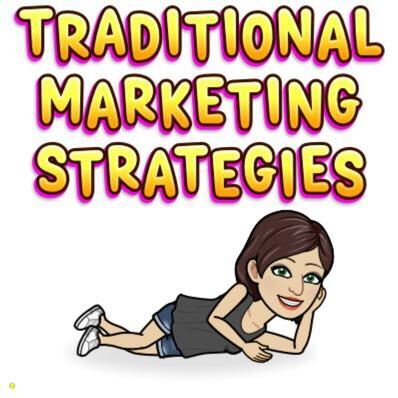1. Direct Mail Campaigns
How to Implement
- Target Your Audience: Use customer data to create a targeted mailing list.
- Craft Compelling Copy: Write personalized, engaging messages that highlight your value proposition.
- Include a Strong Call-to-Action: Encourage readers to visit your store,website, or contact you directly.
- Example: A local bakery sends postcards with a discount code to nearby residents, resulting in increased foot traffic.
Why It Works
Direct mail has a median ROI of 29%, higher than paid search and online display ads. It offers a personal touch and tangibility separate to online marketing.
2. Referral Programs
How to Implement
- Incentivise Referrals: Offer discounts or freebies to customers who refer new clients.
- Promote Widely: Use in-store signage and direct mail to inform customers about the program.
- Track and Reward: Use a tracking system to ensure referrers receive their rewards.
- Example: A gym offers a free month for every new member referred, boosting sign-ups and retention.
Why It Works
Referred customers have a 16% higher lifetime value. Trust in recommendations from friends and family drives higher conversion rates.
3. Public Speaking Engagements
How to Implement
- Find Relevant Events: Look for industry conferences, community events, or local meetups.
- Prepare Valuable Content: Share insights and actionable tips that address common challenges in your industry.
- Engage with the Audience: Encourage questions and provide your contact information for follow-ups.
- Example: A financial advisor speaks at a local business seminar, attracting new clients through shared expertise.
Why It Works
Public speaking establishes authority and trust. It allows direct interaction with potential clients, fostering personal connections.
4. Joint Ventures
How to Implement
- Identify Potential Partners: Look for non-competing businesses that share your target audience.
- Propose a Mutual Benefit: Create offers that benefit both parties, such as bundled services or co-hosted events.
- Promote Together: Use both businesses’ marketing channels to reach a wider audience.
- Example: A spa partners with a local gym to offer a joint membership discount, attracting new clients for both businesses.
Why It Works
Joint ventures leverage the customer base of both partners, creating a win-win situation and expanding reach without significant additional cost.
5. Print Advertising
How to Implement
- Choose the Right Publications: Select magazines, newspapers, or newsletters that your target audience reads.
- Design Eye-Catching Graphics: Use strong visuals and concise messaging tograb attention.
- Track Responses: Include unique codes or URLs to measure effectiveness.
- Example: A boutique clothing store places ads in a local fashion magazine, driving store visits and sales.
Why It Works
Print advertising can target specific demographics effectively. Readers of print materials often engage more deeply compared to online marketing.
6. Networking Events
How to Implement
- Attend Regularly: Make a habit of attending local business or industry networking events.
- Prepare Your Pitch: Have a clear, concise introduction of your business and what you offer.
- Follow Up: Collect contact information and send personalised follow-up messages.
- Example: A software agency attends business meetups and follows up with potential clients, securing new projects.
Why It Works
Networking builds relationships and trust, leading to referrals and new business opportunities.
7. Charity Involvement
How to Implement
- Choose Relevant Causes: Select charities that align with your business values and resonate with your customers.
- Promote Your Efforts: Use newsletters, social media, and press releases to share your involvement.
- Engage Customers: Offer to match customer donations, host charity events or donate your services.
- Example: A restaurant partners with a local food bank, hosting fundraising events and donating a portion of proceeds, enhancing its community image and attracting new customers.
Why It Works
Supporting charities boosts your brand’s reputation and builds goodwill. Customers appreciate businesses that give back to the community.
8. Being a Podcast Guest
How to Implement
- Research Relevant Podcasts: Identify podcasts in your industry that align with your expertise.
- Pitch Your Topic: Craft a compelling pitch that outlines the value you can provide to the podcast’s audience.
- Prepare Your Content: Develop engaging and informative content that will resonate with listeners. Have a free resource to give away.
- Example: A marketing expert appears on a popular business podcast, sharing tips on social media strategies, which drives traffic to their website and increases their client base.
Why It Works
Podcast appearances build authority and reach a targeted audience. Listeners are often highly engaged and trust the recommendations of the host.
9. Co-Authoring a Book
How to Implement
- Find Co-Authors: Partner with industry experts who can provide complementary knowledge.
- Outline the Book: Plan the book’s structure, ensuring it covers valuable insights and practical advice.
- Promote the Book: Use speaking engagements, media appearances, and social media to market the book.
- Example: A marketing strategist collaborates with a financial advisor to write a book on small business growth, leveraging their combined networks to reach a wider audience.
Why It Works
Co-authoring a book establishes credibility and thought leadership. It also expands reach through the combined networks of the authors.
10. Hosting Workshops
How to Implement
- Choose Relevant Topics: Select subjects that address common challenges or interests in your industry.
- Promote Widely: Use local community boards, flyers, and partnerships with local businesses to attract participants.
- Provide Value: Ensure the workshop offers practical, actionable insights and takeaways.
- Example: A graphic design firm hosts a workshop on branding strategies for small
businesses, attracting new clients and enhancing their reputation as experts.
Why It Works
Workshops provide direct value to participants and position you as an authority in your field. They also offer opportunities for networking and direct engagement.
11. Flyers and Brochures
How to Implement
- Design Attractive Materials: Create visually appealing and informative flyers and brochures.
- Distribute Strategically: Place them in high-traffic areas or distribute them at relevant events.
- Include a Call-to-Action: Encourage recipients to visit your website or contact you for more information.
- Example: A local gym distributes flyers at a nearby health fair, leading to an increase in memberships.
Why It Works
Flyers and brochures are cost-effective and can reach a targeted local audience. They provide tangible information that potential customers can refer to later.
12. Billboards
How to Implement
- Select High-Traffic Locations: Choose locations where your target audience is likely to see the billboard.
- Create Impactful Designs: Use bold visuals and concise messaging to capture attention quickly.
- Track Results: Measure the impact of the billboard campaign.
- Example: A new restaurant uses a billboard near a busy highway to announce its opening, drawing in curious diners.
Why It Works
Billboards offer high visibility and can reach a broad audience. They are particularly effective for building brand awareness in a specific geographic area.
13. Radio Advertising
How to Implement
- Choose the Right Stations: Select radio stations that your target audience listens to.
- Craft Compelling Promos: Develop engaging and memorable radio spots.
- Measure Impact: Track response rates through special offers or dedicated phone lines.
- Example: A local car dealership runs a promotion on a popular morning radio show, boosting showroom visits and sales.
Why It Works
Radio advertising reaches listeners during their daily routines. It can effectively target specific demographics and drive immediate action.
14. Door-to-Door Sales
How to Implement
- Train Your Team: Ensure sales representatives are well-trained and knowledgeable about your products.
- Personalise Pitches: Tailor your sales pitch to address the specific needs and interests of each potential customer.
- Follow Up: Collect contact information and follow up with interested prospects.
- Example: A home security company uses door-to-door sales to demonstrate their systems, leading to higher conversion rates.
Why It Works
Door-to-door sales provide a personal touch and allow for direct interaction with potential customers. It can be particularly effective for high-involvement products.
15. Entering Business Awards
How to Implement
- Research Relevant Awards: Identify industry awards that align with your business and its achievements.
- Prepare a Strong Application: Highlight your successes, innovations, and unique selling points.
- Promote Your Participation: Share news about your nomination and wins through press releases, social media, and your website.
- Example: A local restaurant wins a prestigious culinary award, leveraging the accolade in their marketing campaigns to attract new customers and enhance their reputation.
Why It Works
Winning business awards boosts credibility and can lead to increased media exposure. It validates your business’s quality and can attract new customers through enhanced trust and recognition.
16. Referral Partners
How to Implement
- Identify Complementary Businesses: Partner with businesses that target the same audience but are not direct competitors.
- Create Mutual Benefits: Develop a referral agreement that benefits both parties, such as commission-based incentives.
- Communicate Regularly: Keep in touch with partners to ensure they are informed about your services and any updates.
- Example: A real estate agent partners with a local mortgage broker to refer clients to each other, increasing business for both.
Why It Works
Referral partnerships create a network of support, enhancing credibility and reaching new potential clients through trusted sources.
17. Event Sponsorships
How to Implement
- Choose Relevant Events: Sponsor events that align with your brand values and attract your target audience.
- Offer Value: Provide products, services, or financial support to enhance the event experience.
- Promote Your Involvement: Use social media and your website to showcase your sponsorship and engage with event attendees.Example: A tech company sponsors a local hackathon, showcasing its products while building relationships with emerging developers.
Why It Works
Event sponsorships boost brand visibility and demonstrate community involvement, fostering goodwill and trust among potential customers.
18. Telemarketing
How to Implement
- Build a Targeted List: Create a list of potential customers who are likely to be interested in your offerings.
- Develop a Script: Prepare a script that addresses common questions and objections.
- Monitor Results: Track the effectiveness of your calls and adjust your approach as needed.
Example: A software company uses telemarketing to reach small businesses, providing detailed product information and securing sales appointments.
Why It Works
Telemarketing allows for direct communication with potential customers, enabling personalized pitches and immediate feedback.
19. Expos: Participating in trade tables at expo events presents a unique opportunity to boost visibility and engage directly with potential customers. These events allow businesses to showcase their products or services in a dynamic environment, fostering face-to- face interactions that build trust and rapport.
While online marketing is essential for reaching broad audiences, the personal connections made at trade shows can significantly enhance brand loyalty and awareness. However, it’s important to assess the effectiveness of each event attended; investing time and resources into expos that don’t yield substantial returns can drain your budget. By regularly evaluating the impact of your participation, businesses can optimise their event strategy, ensuring that they focus on the most beneficial opportunities for growth and engagement.
Traditional marketing methods, when used effectively, can complement your online marketing, and drive significant results. By combining many of these methods, businesses can harness the strengths of both traditional and online marketing strategies for maximum visibility





